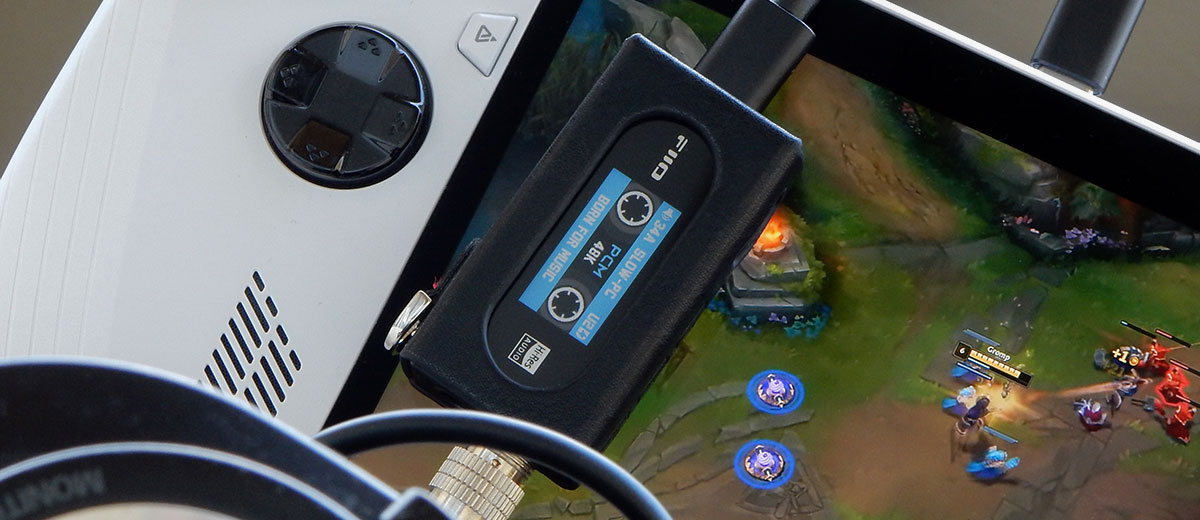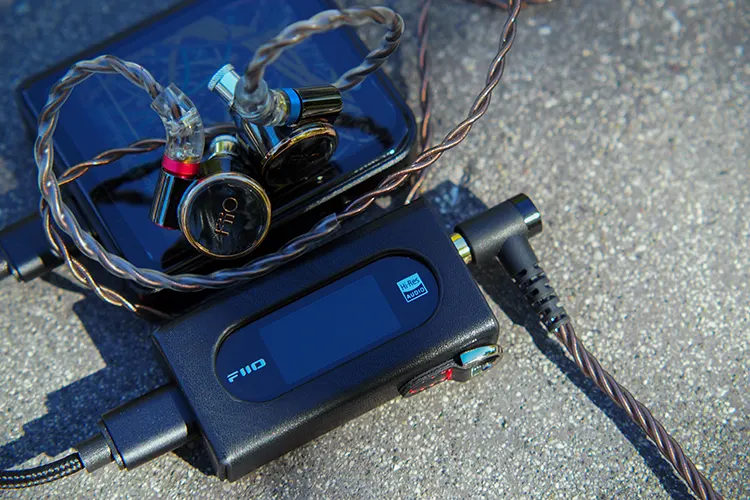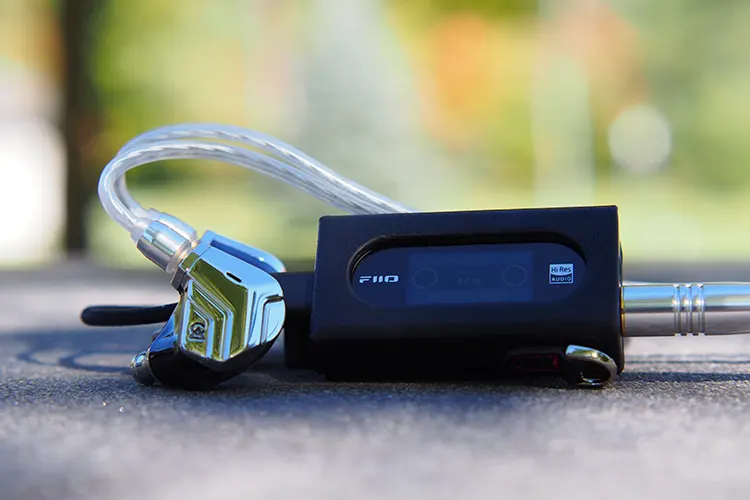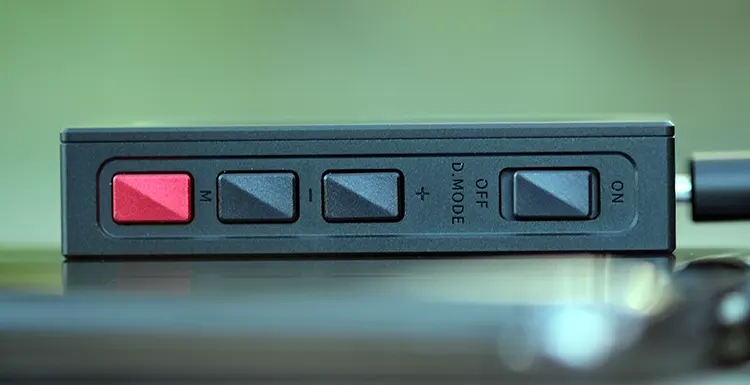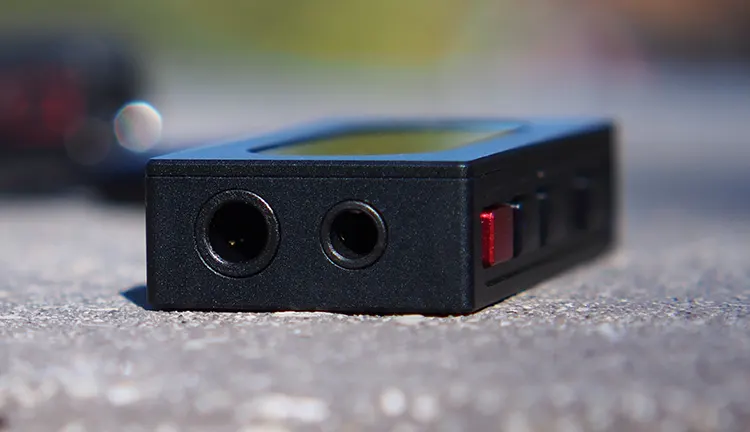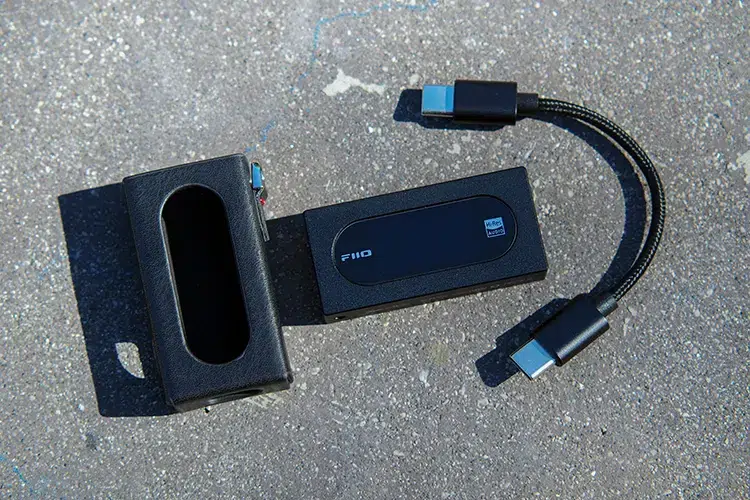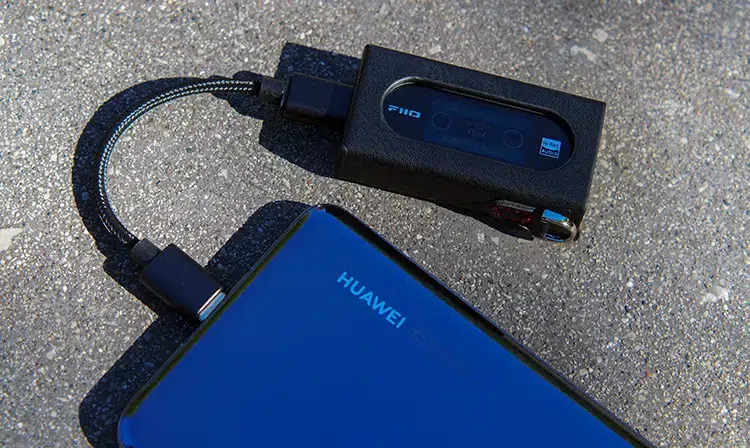In this feature, Thomas reviews the FiiO KA15, an affordable retro-inspired dual CS43198 Dongle DAC capable of up to 500mW of output power. It is priced at $109.99.
Disclaimer: This sample was sent to me in exchange for my honest opinion. Headfonics is an independent website with no affiliate links or services. I thank FiiO for their support.
You can click here to learn more about the FiiO audio products we have previously reviewed on Headfonics.
This post follows our current scoring guidelines which you can read in more detail here.
Today we’re checking out the KA15 from FiiO, newly released in September of this year. In their lineup of USB dongles, it slots in just under the flagship KA17 and retails at the time of writing for $109.
The KA15 is quite powerful for a device of this size, offering balanced and single-ended outputs from a dual DAC, dual op-amp configuration.
FiiO has assigned the catchphrase “Fun little dongle” to the KA15 because of features like the cassette tape-inspired interface, custom EQ support, and smart features like the real-time power consumption display.
I’ve been using it for a couple of weeks and comparing it to staple devices in my everyday carry kit. I have found it a competent, versatile device with a neat interface making the KA15 one of my go-to devices beyond the purposes of testing for this review.
Features
The KA15 is a feature-packed dongle DAC, offering a lot of capability and functionality beyond what are usually simple devices.
Inside are dual Cirrus CS43198 DACS and dual SG Micro SGM8262 op-amps. In the desktop mode, this gives the KA15 an impressive power output of up to 560mW per channel, which is easily enough to drive my most demanding IEMs, the Astrotec Phoenix, up to comfortable listening volumes.
The FiiO Control App allows additional customization and control, such as custom 10-band PEQ tuning. This app also allows you to control all the other basic functions of the KA15, such as screen brightness, volume, and the various filter types.
You can also select between two DAC types: A/B and H. This gives you two efficiency options which is helpful if needing to stretch the battery life on your portable device without sacrificing audio quality.
The KA15 also features a compact 0.96-inch IPS display. This is used to show off the unique cassette-inspired graphic displayed while playing music, along with accessing the numerous customizability functions offered by the device.
The KA15 also supports in-line controls and microphones for phone calls. This is useful for those using the KA15 primarily with their phones since they won’t need to disconnect the dongle to take or receive calls.
Design
Thanks to its 0.92-inch IPS display and creative, cassette-inspired GUI, the KA15 has a unique look among the dongles I’ve tested. The front of the KA15 is dominated by the pill-shaped glass covering the display with FiiO and Hi-Res Audio branding on either side of the screen.
One side of the device contains more branding and model info, while the other houses the various controls. The red metal button gives you access to the KA15’s menus, followed by volume buttons that double for sub-menu navigation and a toggle slider for desktop or mobile output modes.
One end of the device contains the USB-C port for connecting the KA15 to your source device. The other end features both single-ended 3.5mm and balanced 4.4mm outputs.
While I wish the buttons were shaped differently to make determining which-is-which easier, particularly for the volume controls, you get used to the layout reasonably quickly. Otherwise, the physical design and interface look good and work as they should.
The buttons also have good haptic feedback. When pressed, they don’t require excessive pressure to activate and respond with a satisfying click, and the desktop mode slider produces a very satisfying “snick” when shifted.
The build quality also helps to make the KA15 nice to interact with. The aluminum shell is immaculately constructed, with flawless fit and finish surrounding the various ports, buttons, and integration of the screen and protective glass surface.
Controls
FiiO’s GUI for the KA15 has a clean, attractive design with clearly labeled menus and options. While you can only view one at a time, despite the small screen size limiting what can be shown, you’re given enough information to understand each setting and sub-option.
Navigating the plethora of options is easy, but not intuitive. The red menu button is used to enter, exit, and cycle through the various options, while the volume buttons allow you to cycle through the sub-options.
The issue is that there is no back button so if you overshoot the option you wanted, you need to cycle through everything to get back.
Luckily, the KA15 has full support through FiiO’s Control app which allows you to change all the same settings available on-device, through the much more manageable smartphone application.
Lastly, the visual appeal of the KA15 sells the screen concept. Outside the menus, the main image mimics a spinning cassette tape while providing details like your volume level, filter, bitrate, and more, such as voltage and current if you turn that option on.
It’s impressive that FiiO’s engineers could develop a usable interface for such a compact display while keeping it visually appealing.
One extra button would make it that much better but given the small size and limited real estate for an expanded physical interface, adding it would be quite challenging.
I/O
With the KA15, you can connect to various devices through the USB-C port. The device supports Android, iOS, Windows, MAC, and other operating systems, such as those found in portable gaming devices.
The KA15’s firmware will automatically update through this port when connected to a device when running the FiiO Control app. It also supports in-line controls and microphones for phone calls on CTIA-supported headphones.
On the other end of the KA15 are two output ports. One supports 3.5mm single-ended headphones, while the other supports 4.4mm balanced headphones.
I experienced no issues with my devices recognizing the KA15, or with the various headphones tested working once plugged in.
Filter Choices
With the KA15 users are given five filter options: Fast-LL (minimum phase fast roll-off), Fast-PC (linear phase fast roll-off), Slow-LL (minimum phase slow roll-off), Slow-PC (linear phase slow roll-off), and Non-OS (non-over-sampling).
These can be selected through the devices’ on-board menus, or through the FiiO Control app where the naming convention is slightly different.
I am new to this aspect of the hobby and cannot explain the purpose and nuances of each filter option. After listening to each filter, the Slow-LL filter was the one I found myself using most, though I cannot explain exactly why.
I highly recommend experimenting with the various filter options in the KA15 to see which suits you best.
Packaging & Accessories
As an affordable product, the KA15 comes in appropriate packaging. The compact white box is covered in a cardboard sheath with a glossy, high-quality image of the device on the front and prominent model and branding details.
Sliding off the sheath reveals a quick start guide. Lifting that out, you find the KA15 tucked tightly into a protective foam cutout, set above a smaller cardboard box where the accessories are stored.
In all you receive:
- KA15 DAC/Amp
- Type-C to Type-C USB cable
- Protective leatherette case
- After-sales service guide
Overall, a perfectly fine unboxing. The material quality of the packaging is good without excess waste, the Type-C cable is generic thanks to a lack of branding, though it works well, fits aesthetically, and the protective case is a well-built, welcome inclusion.
Sound Impressions
Testing was done with the KA15 paired with a Huawei P40, Shanling M1, and ASUS ROG Ally Z1 Extreme. I listened through the FiiO FH3, Campfire Audio Astrolith, and the Astrotec Phoenix.
Summary
The few FiiO devices I have tested offered a similar signature, which is near neutral with a mild mid-bass bump to add warmth and thickness to the overall presentation. The KA15 matches this experience and sounds as I was expecting.
Signature
With a warm-leaning sound, the KA15 is smooth and detailed with excellent extension that can keep up with the exaggerated specifications of products featuring more advanced driver tech like planar drivers and piezoelectric tweeters.
The more mellow presentation of the KA15 suits bright earphones well, maintaining the treble and upper midrange energy they bring.
With something like the Astrotec Phoenix and its electrostatic tweeters, the note presentation in the treble is well-defined and tight, with the KA15 reining in the looseness and metallic timbre I’ve heard when pairing the Phoenix with other dongles.
Mids through the KA15 are not pushed forward and maintain a neutral presence. The density of the mid-bass works its way up into the mids, giving them a weighted, somewhat dense presentation that works especially well with female vocalists and gruff male vocalists.
The timbre quality from accurate products like JVC’s classic HA-FTX90 or Thinksound’s ON2 is maintained through the KA15, without skewing their presentation to coming across as bright, dry, or dark.
Despite the added weightiness and density, the KA15 doesn’t reduce the micro detail and impressive vocal clarity offered by more advanced earphones like Campfire Audio’s Astrolith.
It wouldn’t have shocked me if the KA15’s mid-bass rise allowed products with a strong mid-bass presence like the FiiO FD3 to sound overly warm and/or bloated, but that isn’t the case.
The emphasis in place is moderate enough to maintain the tuning balance of the earphones in use, with benefits being heard on those products that place most of their focus on the sub-bass since it balances out the presentation.
The KA15 also maintains obscene extension and sub-bass rumble from something like the Astrotec Phoenix. Texturing also remains clear and prominent without the KA15 smoothing things out or limiting the amount of detail presented.
Staging & Dynamics
FiiO’s KA15 performs strongly in terms of staging and dynamics.
On more intimate products, the KA15 pulls the default vocal positioning back which serves to open up the stage.
Through something with an already broad stage, like the Lime Ears Terra or I/O Audio VOLARE, the effect is minimal, but with something more average like the Astrotec Volans, we hear a noticeable improvement in the openness of the presentation.
This openness also helps bump the layering qualities on some products with less dynamic stages, such as the classic Campfire Audio Polaris which provided a very flat sound experience. Through the KA15, layering improves giving the presentation a more well-rounded and dynamic effect.
I found this less apparent for instrument separation and imaging which were mostly unchanged regardless of the listening device used.
Excellent imaging and instrument separation like that in the Campfire Audio Astrolith was maintained, as was the poor imaging and separation from something like the Brainwavz M100.
Click on page 2 below for my recommended pairings and selected comparisons.

